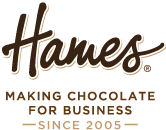The Story of Chocolate

Where Chocolate Comes From
The cocoa tree – Theobroma Cacao – grows in the warm and humid equatorial belt within 20°N and 20°S of the equator. The tree originates from the Ulúa valley in Honduras. Today though, cocoa is cultivated globally in a narrow belt around the equator: in carefully grown plantations in the tropical rainforests of Africa, Asia and Latin America.
Today, Africa is the main overall cocoa supplier, with 75% of the world’s cocoa crop. For the small farms in many thousands of African villages, cocoa cultivation represents an important source of income.
The fragile young cocoa trees only thrive in tropical temperatures within the protective shadow of tall-growing plants such as banana plants or palm trees. From around the fifth or sixth year of their lives, the trees begin to bear pods.


Growing Chocolate
From then, every six months thousands of tiny five-petalled flowers adorn the stem and branches. Only a few will be fertilized and no more than forty will develop into cocoa pods. These resemble elongated, green melons.
Fermentation


Grading Chocolate
When the beans are dry, the cocoa farmers bring their precious harvest to a collection centre where the beans are graded and allotted a quality code. After weighing and packing of the beans into bales of 50-60 kg, the jute sacks are sealed, the source and quality of the beans assured.
Thousands of sacks of cocoa are taken from the collection centre to huge warehouses, their origins all registered. After a second quality control the sacks await shipment to the different processing plants.
From Bean to Liquor
Cocoa beans from different sources are mixed according to the recipes. The blend of cocoa beans from the different regions will always determine the characteristic flavour of each chocolate.


The cocoa liquor is now ready for use as an ingredient of chocolate. It is made up of two different components – cocoa butter and cocoa powder.
At the end of the pressing procedure, this cake is removed and ground further in different stages into a very fine cocoa powder.
From Liquor to Chocolate
To all types, vanilla or vanilla flavour is added to enhance the taste. The ingredients are first weighed very precisely and mixed together and then blended into homogeneous chocolate dough.


The blocks, drops or other shapes can now be transported to the storage and distribution centre.

